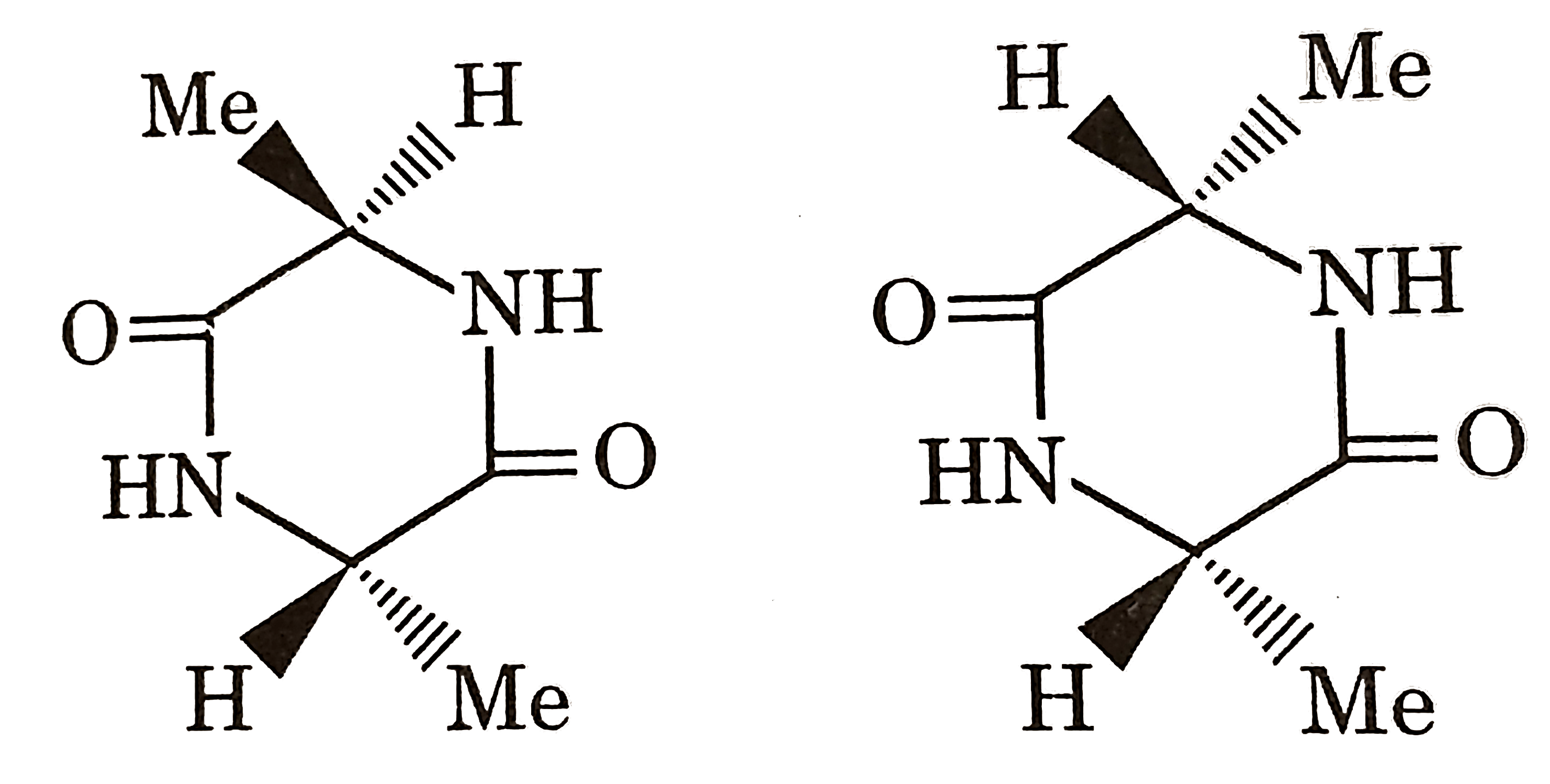For a first order reaction A → B, A is optically active and B is optically inactive, and following experimental data were observed :
∣∣∣Time060 min∞Optical Rotation82∘22∘2∘∣∣∣
If some impurity, find optical rotation after 2 hours :
7∘
12∘
22∘
42∘
The correct Answer is:A
Topper's Solved these Questions
- CHEMICAL KINETICSBook:GRB PUBLICATIONChapter:CHEMICAL KINETICSExercise:F. Effect of Temperature and Catalyst
Explore 92 Videos
- CHEMICAL KINETICSBook:GRB PUBLICATIONChapter:CHEMICAL KINETICSExercise:Mechanism of Reactions
Explore 45 Videos
- CHEMICAL KINETICSBook:GRB PUBLICATIONChapter:CHEMICAL KINETICSExercise:D. Methods to Determine the Rate Law
Explore 28 Videos
- CHEMICAL BONDING-IBook:GRB PUBLICATIONChapter:CHEMICAL BONDING-IExercise:Subjective Type
Explore 120 Videos
- COORDINATION COMPOUNDSBook:GRB PUBLICATIONChapter:COORDINATION COMPOUNDSExercise:SBJECTIVE TYPE
Explore 98 Videos
Similar Questions
A→B first order reaction A is ooptical active and B is optically inactive. A series of experiment were conducted on a solution of A
Time060min∞optical rotation82∘77∘2∘
assume some imurity is present calculate the otical rotation for 5 hours.)
(Given in 1.066=0.064, e0.16=1.17)
View SolutionReaction of an optically active alcohol with SOCl2 in absence of base follows with
View Solution
Knowledge Check
A→B first order reaction A is ooptical active and B is optically inactive. A series of experiment were conducted on a solution of A
Time060min∞optical rotation82∘77∘2∘
assume some imurity is present calculate the otical rotation for 5 hours.)
(Given in 1.066=0.064, e0.16=1.17)A60B30C20D120
STATEMENT-1: (A) is optically active and (B) is optically inactive.
STATEMENT-2: (A) has a centre of symmetry.AStatement-1 is True, Statement-2 is True, Statement-2 is a correct explanation for Statement-1.BStatement-1 is True, Statement-2 is True, Statement-2 is NOT a correct explanation for Statement-7CStatement-1 is True, Statement-2 is False.DStatement-1 is False, Statement-2 is True.When sucrose is hydrolyzed it produced dextro-rotatory "glucose " and leavo-rotatory "fructose" whereas reactant itself is a dextro-rotatory compound. The above conversion process follows first order kinetics. Similarly an optically active compound A hydrolyzed as follows :
A+H2OH+−−→2B+C
The observed rotation of compound A,B and C are 60∘,50∘ and −80∘ per mole respectively. The angle of rotation after 40 minutes and after the completion of reaction were 26∘ and 10∘ respectively at 27∘C and activation energy for conversion is 27kJ mol−1 .
The value of rate constant of above reaction at 27∘C is :A5.57×10−3min−1B1.94×10−3min−1C1.37×10−6min−1D6.13×10−3min−1
First Order Reaction in terms of Pressure and Optical Rotation| Single step and Multi step reactions | Molecularity of a reaction
View SolutionThe optical rotation of cane sugar in 0.5 N lactic acid at 25∘C at various time intervals are given below :
Time0143511360∞(min)Rotation(.∘)34.50∘31.10∘13.98∘−10.77∘
Show that the reaction is of first order .
View Solution
 Cl2−−→hv Products
Cl2−−→hv Products
Find out no of correct statements about above reaction.
(A) No of monochlorinated products are three
(B) No of optically active monochlorinated products are two
(C) No of optically inactive monochlorinated product is one
(D) No of dichlorinated products are ten
(E) No of optically active dichlorinated product are six
(F) No of optically inactive dichlorinated products are 4
(G) No of meso dichlorinated products are two
(H) No of dichlorinated products are six
(I) No of optically active dichlorinated products are seven
(J) No of meso dichlorinated products is one
View SolutionWhen sucrose is hydrolyzed it produced dextro-rotatory "glucose " and leavo-rotatory "fructose" whereas reactant itself is a dextro-rotatory compound. The above conversion process follows first order kinetics. Similarly an optically active compound A hydrolyzed as follows :
A+H2OH+−−→2B+C
The observed rotation of compound A,B and C are 60∘,50∘ and −80∘ per mole respectively. The angle of rotation after 40 minutes and after the completion of reaction were 26∘ and 10∘ respectively at 27∘C and activation energy for conversion is 27kJ mol−1 .
The value of t1/2 for above process is at 127∘C
View SolutionWhen sucrose is hydrolyzed it produced dextro-rotatory "glucose " and leavo-rotatory "fructose" whereas reactant itself is a dextro-rotatory compound. The above conversion process follows first order kinetics. Similarly an optically active compound A hydrolyzed as follows :
A+H2OH+−−→2B+C
The observed rotation of compound A,B and C are 60∘,50∘ and −80∘ per mole respectively. The angle of rotation after 40 minutes and after the completion of reaction were 26∘ and 10∘ respectively at 27∘C and activation energy for conversion is 27kJ mol−1 .
At what temperature half life of above process is equal to 31.1 minutes.
View Solution
